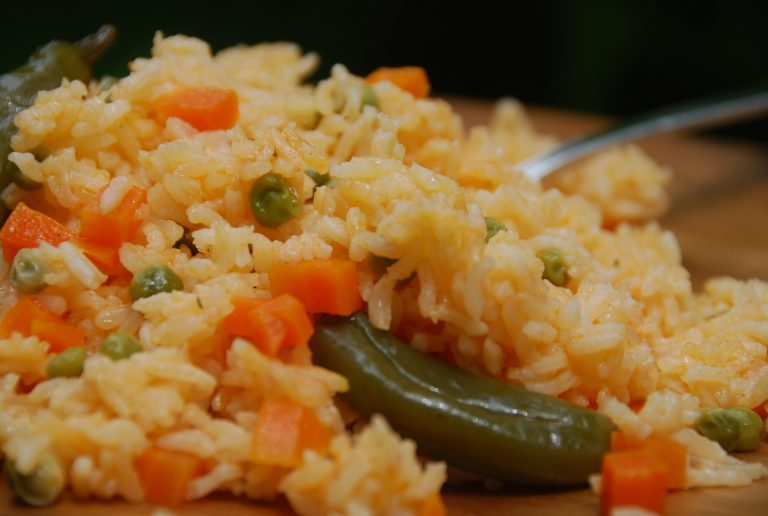Mango Sorbet: Easy Recipe, Health Benefits, and Delicious Pairing Ideas
Mango sorbet is a frozen dessert made from ripe mangoes, sugar, and water. Unlike ice cream, sorbet doesn’t contain any dairy, making it a lactose-free alternative. The primary ingredient, mangoes, provides natural sweetness and a vibrant yellow-orange color. This dessert delivers a smooth, icy texture that’s both refreshing and satisfying.
The Popularity of Mango Sorbet
Mango sorbet has gained popularity due to its tropical flavor and refreshing qualities. It’s a favorite in hot climates where the cooling effect is most appreciated. Many find it a healthier alternative to ice cream since it lacks dairy and often contains fewer calories. Restaurants and cafes frequently include mango sorbet on their menus to cater to those seeking vegan-friendly and gluten-free options.
Below are some factors contributing to its popularity:
- Tropical Flavor: The distinct taste of mangoes adds an exotic twist.
- Health Conscious: Lower in calories and free from artificial additives.
- Dietary Needs: Suitable for lactose-intolerant, vegan, and gluten-free diets.
These aspects make mango sorbet a versatile and appealing dessert choice.
Key Ingredients and Preparation
Essential Ingredients for Mango Sorbet
You need a few simple ingredients for mango sorbet. Fresh mangoes, sugar, and water form the base. Freshness affects the flavor, so always choose ripe mangoes. You can use either granulated sugar or cane sugar. Some recipes incorporate lime juice to add a tangy twist. Additionally, a pinch of salt enhances the overall taste.
Here’s a breakdown of the essential ingredients:
- Mangoes: Preferably ripe and sweet (4 medium-sized)
- Sugar: White granulated or cane sugar (1 cup)
- Water: Filtered water (1 cup)
- Lime juice: Freshly squeezed for extra flavor (optional, 2 tablespoons)
- Salt: A small pinch to balance sweetness
Step-by-Step Preparation Guide
Follow these steps to prepare your mango sorbet. Start by peeling and chopping the mangoes. Remove the seed and cut the flesh into small pieces. Blend the mango pieces until smooth. Use a fine-mesh sieve to strain the puree, removing any fibrous chunks.
- Boil Sugar and Water: Combine sugar and water in a saucepan. Boil until the sugar dissolves completely. Let it cool.
- Blend Mangoes: Place mango chunks in a blender. Purée until smooth.
- Mix Ingredients: Combine cooled sugar syrup, mango purée, lime juice, and salt in a bowl. Stir well.
- Churn the Mixture: If using an ice cream maker, pour the mixture into it and churn according to the manufacturer’s instructions until it’s thick.
- Freeze: Transfer the mixture to an airtight container. Cover and freeze for at least 4 hours or until firm.
Occasionally stir the sorbet during freezing if you don’t have an ice cream maker. Ensure that the mixture remains smooth and creamy. This step-by-step guide helps you create delightful mango sorbet at home.
Health Benefits of Mango Sorbet
Nutritional Content
Mango sorbet contains essential vitamins and minerals from fresh mangoes. A serving provides about 60 calories, making it a lighter alternative to ice cream. Key nutrients include vitamins A, C, and E, which support immune function and skin health. Mangoes also offer dietary fiber that aids digestion, with approximately 2 grams per serving. Besides, they contain antioxidants like beta-carotene, which helps fight free radicals.
Dietary Benefits of Choosing Sorbet
Mango sorbet is vegan, gluten-free, and dairy-free, catering to various dietary restrictions. For those with lactose intolerance, sorbet offers a satisfying dessert option without causing discomfort. Being lower in fat and calories compared to traditional ice cream, it supports weight management goals. Choosing mango sorbet helps you enjoy a delicious treat without compromising nutritional values, ideal for a balanced diet.
Comparisons With Other Frozen Desserts
Mango Sorbet vs. Mango Ice Cream
Mango sorbet differs significantly from mango ice cream, primarily in ingredients and texture. Sorbet, which uses ripe mangoes, sugar, water, lime juice, and salt, contains no dairy. This absence of milk or cream makes sorbet a suitable option for those who are lactose intolerant or seeking a vegan dessert. On the other hand, mango ice cream contains dairy products, resulting in a creamier, richer texture.
Caloric content differs between mango sorbet and mango ice cream. Sorbet tends to be lower in calories, often favored by those managing their weight. The typical serving of mango sorbet (100 grams) contains about 120 calories, while the same amount of mango ice cream contains approximately 200 calories.
Mango Sorbet vs. Other Fruit Sorbets
Mango sorbet, though similar to other fruit sorbets, stands out due to its distinct tropical flavor. Other fruit sorbets, like raspberry or lemon, offer different taste experiences but share a common base of fruit puree, sugar, water, and sometimes citrus juice.
Nutritional profiles of fruit sorbets can vary. Mango sorbet contains vitamins A and C, fiber, and antioxidants, attributed to the mangoes. Other fruit sorbets deliver different vitamins based on their primary fruit. For instance, raspberry sorbet is rich in vitamin C and fiber, while lemon sorbet is a good source of vitamin C and has fewer calories.
Texture and sweetness levels can also vary among fruit sorbets. Mango sorbet tends to be smoother due to the natural consistency of mango puree. Other fruit sorbets might have a more granular texture, depending on the fruit used and its fiber content.
By choosing mango sorbet over other options, you can enjoy a unique tropical treat while still benefiting from the general attributes of sorbet, like its compatibility with various dietary restrictions and lower calorie content compared to ice cream.
Serving and Pairing Ideas
Best Serving Suggestions
Serve mango sorbet in chilled bowls for a refreshing dessert experience. Add mint leaves or lime zest to enhance the presentation and flavor. For special occasions, scoop mango sorbet into hollowed-out mango halves, creating a visually appealing and flavorful treat. Use scoops of sorbet to top other desserts, like fruit tarts or pavlova, adding a tropical twist. Layer mango sorbet with coconut milk or tropical fruits, creating vibrant parfaits.
Pairing Mango Sorbet With Other Foods
Pair mango sorbet with savory dishes for a balanced contrast. Serve alongside grilled shrimp or spicy tacos to create a refreshing palate cleanser. Combine with coconut-based desserts, like coconut macaroons or panna cotta, for a harmonious blend of tropical flavors. Offer with fresh berries or exotic fruits, such as passion fruit or pineapple, to enhance the tropical theme. Pair with sparkling water or champagne to create a light, effervescent dessert drink.
Conclusion
Mango sorbet is a delightful treat that brings the taste of the tropics to your home. Its health benefits and versatility make it a fantastic addition to any meal or celebration. Whether you serve it in creative ways or pair it with complementary dishes and drinks, mango sorbet is sure to impress. Give it a try and enjoy the refreshing, nutritious goodness of this tropical delight.






